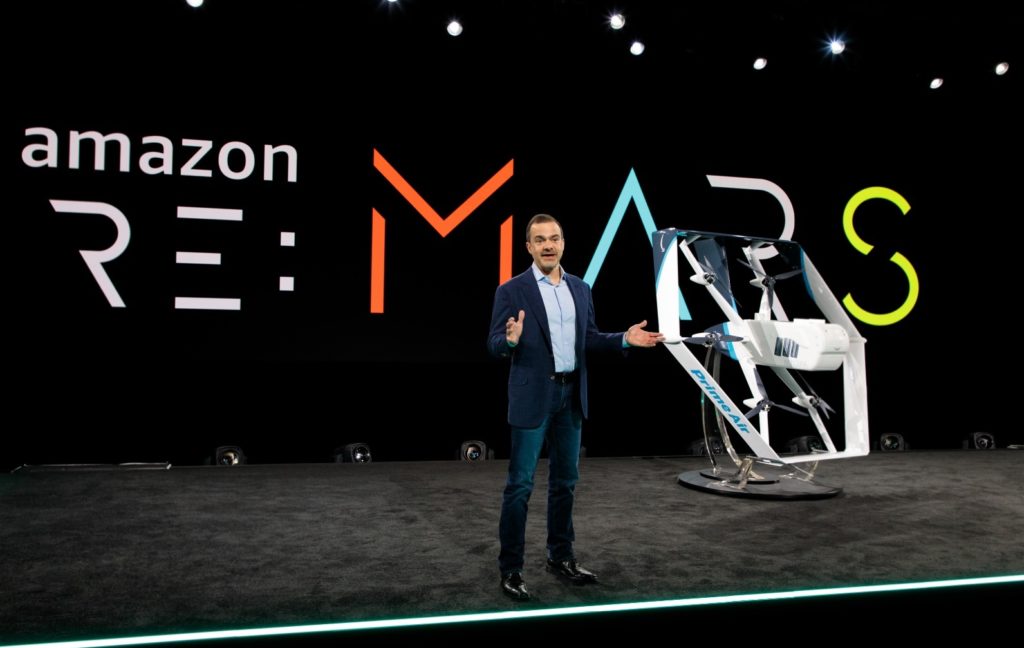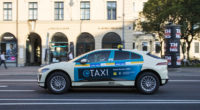A design that has literally come straight out of science fiction, Amazon has today unveiled a new helicopter-drone hybrid that it will use for its proposed Prime Air drone delivery service. The unveiling — sans much tech specifics about the drone — was done at the ecommerce giant’s re:MARS conference in Las Vegas.
The drone is a massive upgrade to Amazon’s previously unveiled delivery drones. This new hybrid devises its take off tech from helicopters, while its flying tech from airplanes, hence being called a hybrid. It can do vertical takeoffs and landings – like a helicopter. And it’s efficient and aerodynamic – like an airplane. It also easily transitions between these two modes – from vertical-mode to airplane mode, and back to vertical mode.
Amazon has also ensured overall safety of the device. It is loaded with all sorts of sensors such as multi-view stereo vision, running on top of company’s proprietary AI algorithms, to ensure safety of other flying and high-rising stationary objects. The distinctive aircraft is controlled with six degrees of freedom, as opposed to the standard four. This makes it more stable, and capable of operating safely in more gusty wind conditions.
For the drone to descend for delivery, it needs a small area around the delivery location that is clear of people, animals, or obstacles. The hybrid drone determine this using explainable stereo vision in parallel with sophisticated AI algorithms trained to detect people and animals from above.
A customer’s yard may have clotheslines, telephone wires, or electrical wires. Wire detection is one of the hardest challenges for low-altitude flights. Through the use of computer-vision techniques we’ve invented, Amazon’s drones can recognize and avoid wires as they descend into, and ascend out of, a customer’s yard.
However, for general consumers to be able to witness such deliveries happening could take a fairly long time. It can take years for traditional aircraft manufacturers to get U.S. Federal Aviation Administration approval for new designs. The agency itself, is still developing regulations to allow drone flights over populated areas and to address national security concerns.






